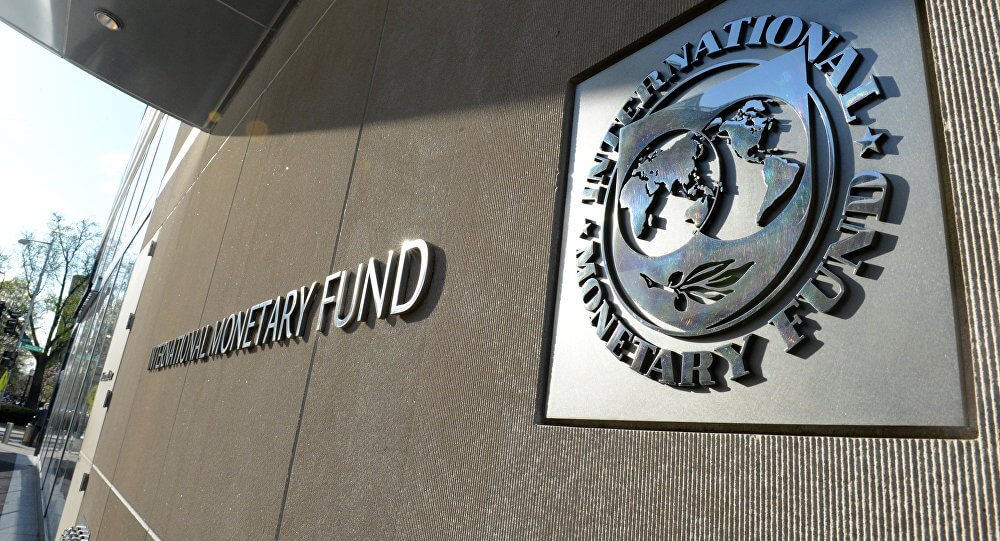IMF Cuts Global Growth Forecast To 2.8% Amid Rising Trade Tensions

The International Monetary Fund (IMF) has lowered its global economic growth forecast for 2025 to 2.8 per cent, citing escalating trade tensions and growing policy uncertainty triggered by sweeping new U.S. tariffs.
The revised figure represents a 0.5 percentage point downgrade from its January 2025 projection and reflects deepening concerns over the outlook for global economic stability.
In an unscheduled update to its World Economic Outlook, released just ten days after U.S. President Donald Trump announced blanket tariffs on nearly all trading partners, the IMF issued a stark warning about the potential consequences of a widening global trade war.
The report serves as a “reference forecast” based on developments through April 4, amid what the Fund described as “extremely high levels” of uncertainty.
“We are entering a new era as the global economic system that has operated for the last 80 years is being reset,” said IMF Chief Economist Pierre-Olivier Gourinchas during a press briefing.
The IMF also revised its global inflation forecast upwards, projecting inflation to hit 4.3 per cent in 2025 and 3.6 per cent in 2026, compared to previous estimates made in January.
The upward revision is driven largely by tariff-induced price pressures, particularly in the U.S. and other advanced economies.
The report slashed the IMF’s 2025 global trade growth forecast by 1.5 percentage points to 1.7 per cent, half the pace seen in 2024.
The Fund attributed this sharp drop to accelerating economic fragmentation, confusion around supply chains, and deteriorating investor confidence.
“Trade will continue,” Gourinchas said, “but it will be less efficient and more expensive, as businesses struggle to determine where to invest, source products, or secure components.” He stressed the importance of restoring clarity and predictability to the global trading system.
Among the most significant country-level downgrades was that of the United States, where the IMF cut its 2025 GDP growth forecast by 0.9 percentage points to 1.8 per cent, down from 2.8 per cent in 2024. Growth in 2026 is now forecast at 1.7 per cent, 0.4 percentage points below previous projections.
Although the IMF does not expect a recession in the U.S., Gourinchas warned that the odds of a downturn have increased from around 25 per cent to 37 per cent, driven by policy volatility and the inflationary effects of the new tariffs.
U.S. headline inflation is now projected to hit 3 per cent in 2025, up one full percentage point from the Fund’s January forecast.
Gourinchas emphasised the need for monetary policy vigilance, noting that the Federal Reserve will have to act decisively to prevent inflation expectations from becoming unanchored.
“Many Americans are still feeling the effects of the inflation spike during the COVID pandemic,” he added.
Asked about the potential implications of political interference at the U.S. Federal Reserve, particularly speculation around the removal of Fed Chair Jerome Powell, Gourinchas responded, “It is absolutely critical that central banks maintain their independence in order to sustain credibility in managing inflation.”
The IMF also downgraded forecasts for China and most major economies, attributing the weaker outlook to the direct and indirect effects of the new U.S. trade measures, which have pushed global tariffs to levels not seen in over a century.
The Fund maintained its five-year global growth forecast at 3.2 per cent, well below the 3.7 per cent historical average from 2000 to 2019, and noted that there is little hope for improvement in the absence of “significant structural reforms” across key economies.
Despite rising uncertainty, the IMF said financial markets have remained stable, with no signs of panic in currency markets or capital flows. “We are not seeing a stampede or a run to the exits,” Gourinchas assured reporters.
“The international monetary system remains resilient — for now.”
IMF Cuts Global Growth Forecast To 2.8% Amid Rising Trade Tensions is first published on The Whistler Newspaper



